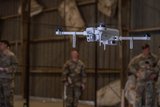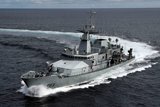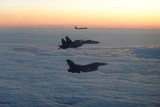Opinion: Korean Peninsula 2021 – positive but with storm clouds
July 2021 – It is now three years since the Singapore Summit between US President Donald Trump and the North Korean Supreme Leader Kim Jong-un. It has been a whirlwind of follow-on meetings, negotiations, deals, denuclearisation, reconstruction and a stable, peaceful transition – way beyond anything that the Vegas odds-makers and political pundits in the salons of Washington, Beijing, Seoul and other world capitals predicted.
Already have an account? Log in
Want to keep reading this article?
More from Defence Notes
-
![What will next-gen counter-UAS capabilities for the US look like?]()
What will next-gen counter-UAS capabilities for the US look like?
Future US counter-uncrewed aerial system solutions are likely to require a flexible, multi-layered approach to tackle a broad spectrum of new threats as they emerge.
-
![Elbit Systems awarded $2.3 billion contract as results soar]()
Elbit Systems awarded $2.3 billion contract as results soar
The company’s order backlog as of 30 September totalled $25.2 billion and more than a third of this is scheduled to be fulfilled before the end of 2026.
-
![US military foresees growing use of 3D printing]()
US military foresees growing use of 3D printing
Advanced manufacturing has evolved to meet military requirements and now supports multiple US critical assets, including Arleigh Burke-class destroyers, F-18, F-22, F-35, Bradley, HMMWV and Patriot.
-
![Irish Naval Service expands as the country looks to defence during EU presidency]()
Irish Naval Service expands as the country looks to defence during EU presidency
The Irish Naval Service has struggled to maintain capability, particularly in the face of lucrative private sector offers luring away personnel.
-
![Resilience, adaptiveness and collaboration vital for success in space (Studio)]()
Resilience, adaptiveness and collaboration vital for success in space (Studio)
Speakers at the Defence In Space Conference (DISC) 2025 highlighted the critical and evolving role of space in national security, defence and the global economy.
-
![Why the NORAD inventory might be the US and Canada’s Achilles’ heel]()
Why the NORAD inventory might be the US and Canada’s Achilles’ heel
Both the US and Canada operate Cold War-era capabilities which cannot defeat today’s and tomorrow’s threats.


























